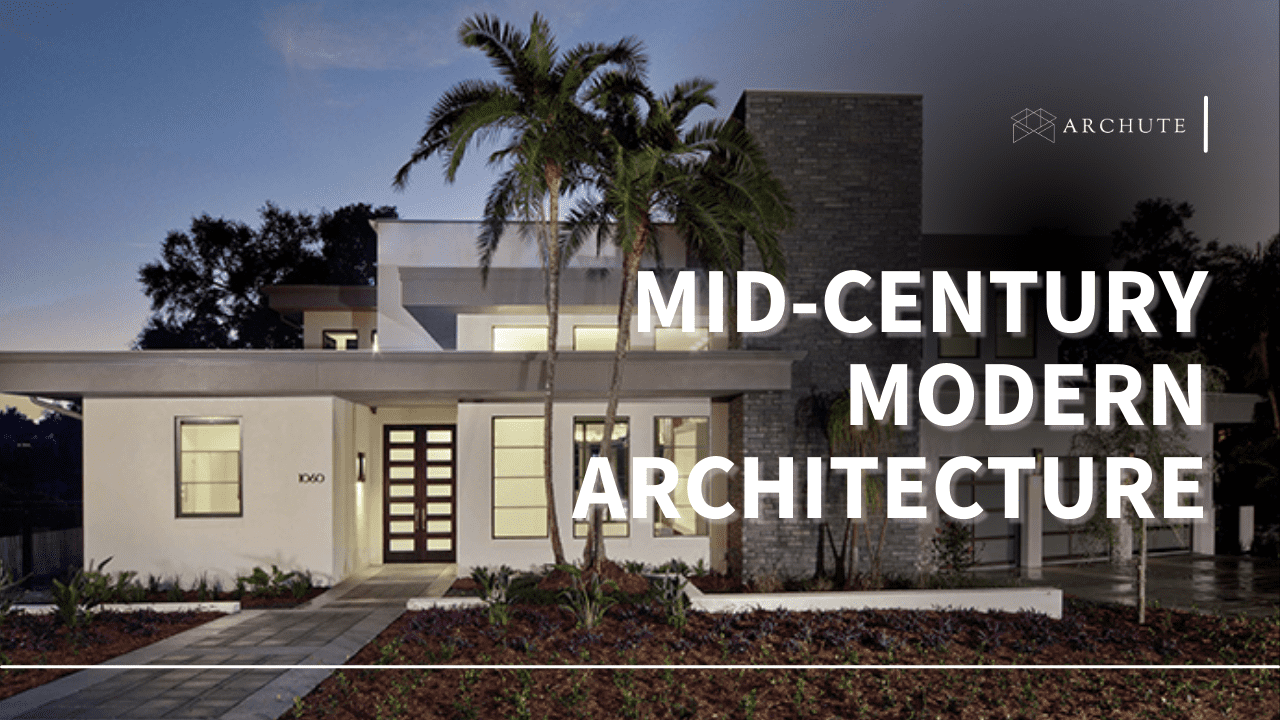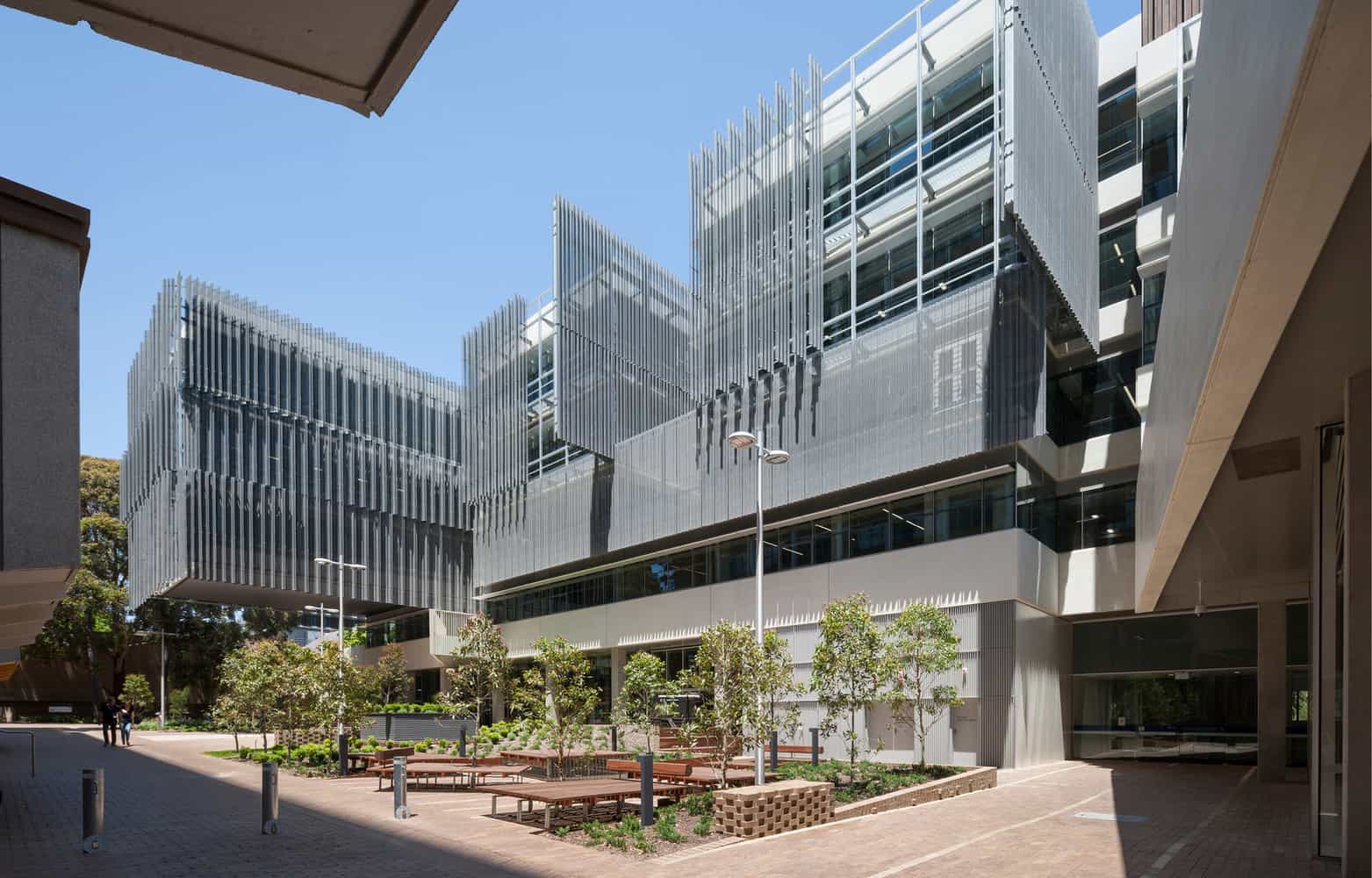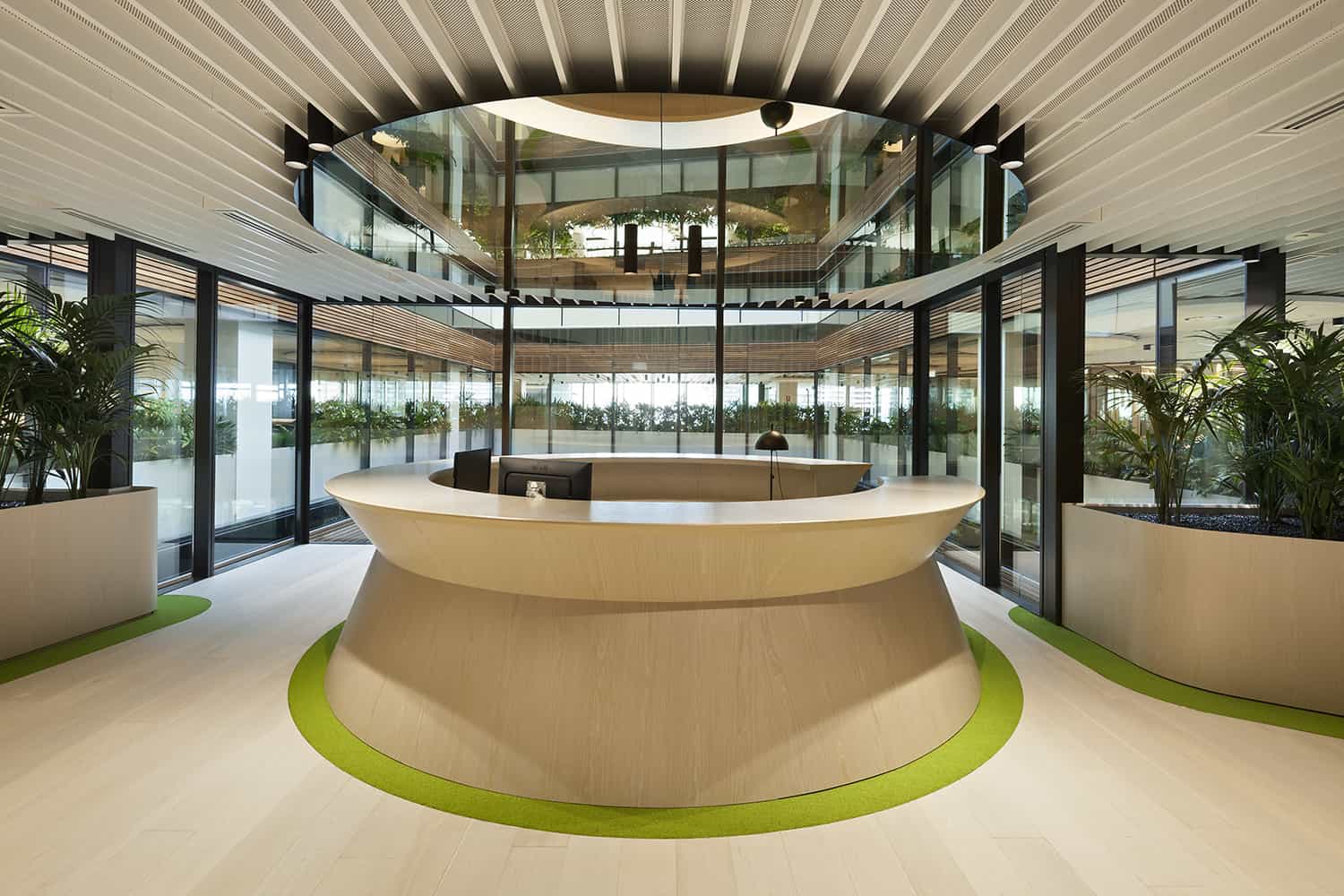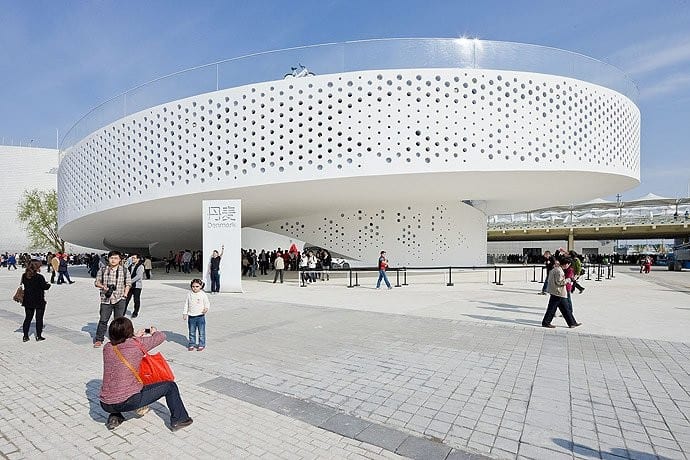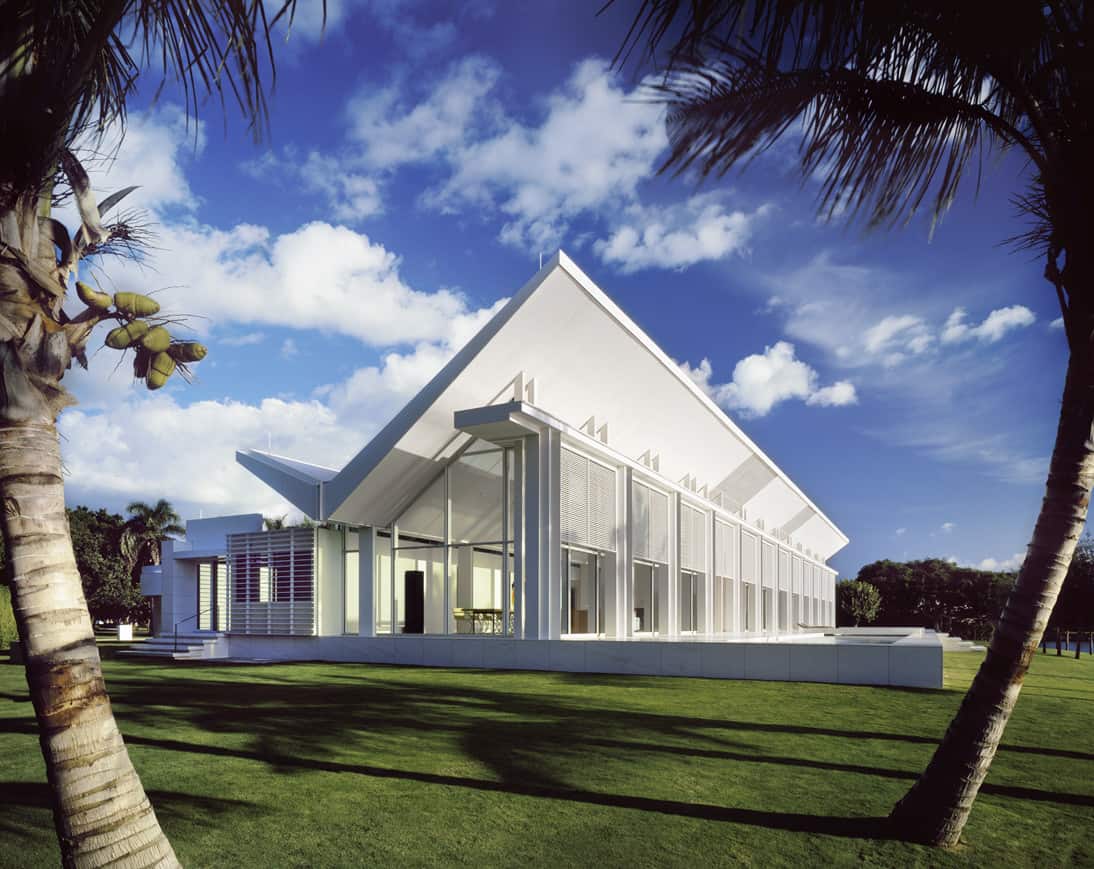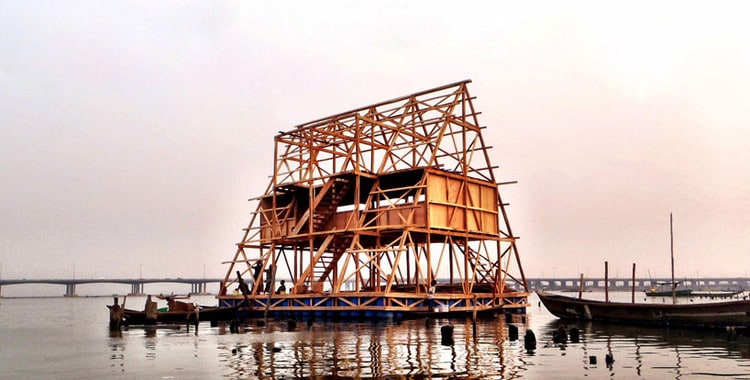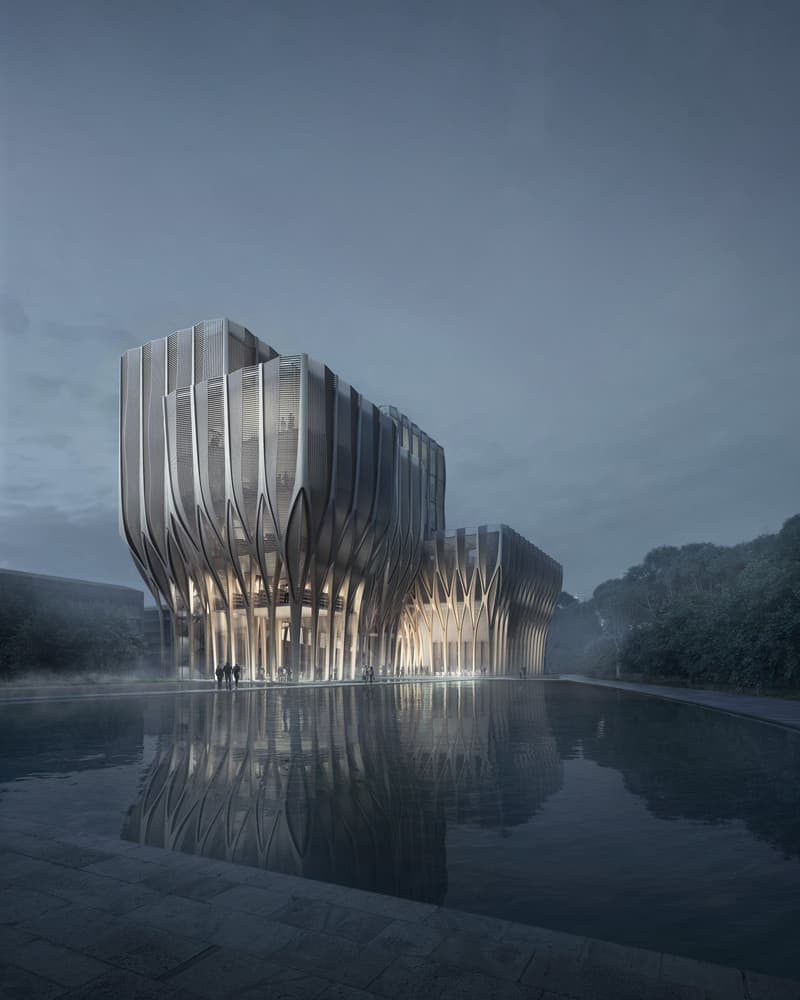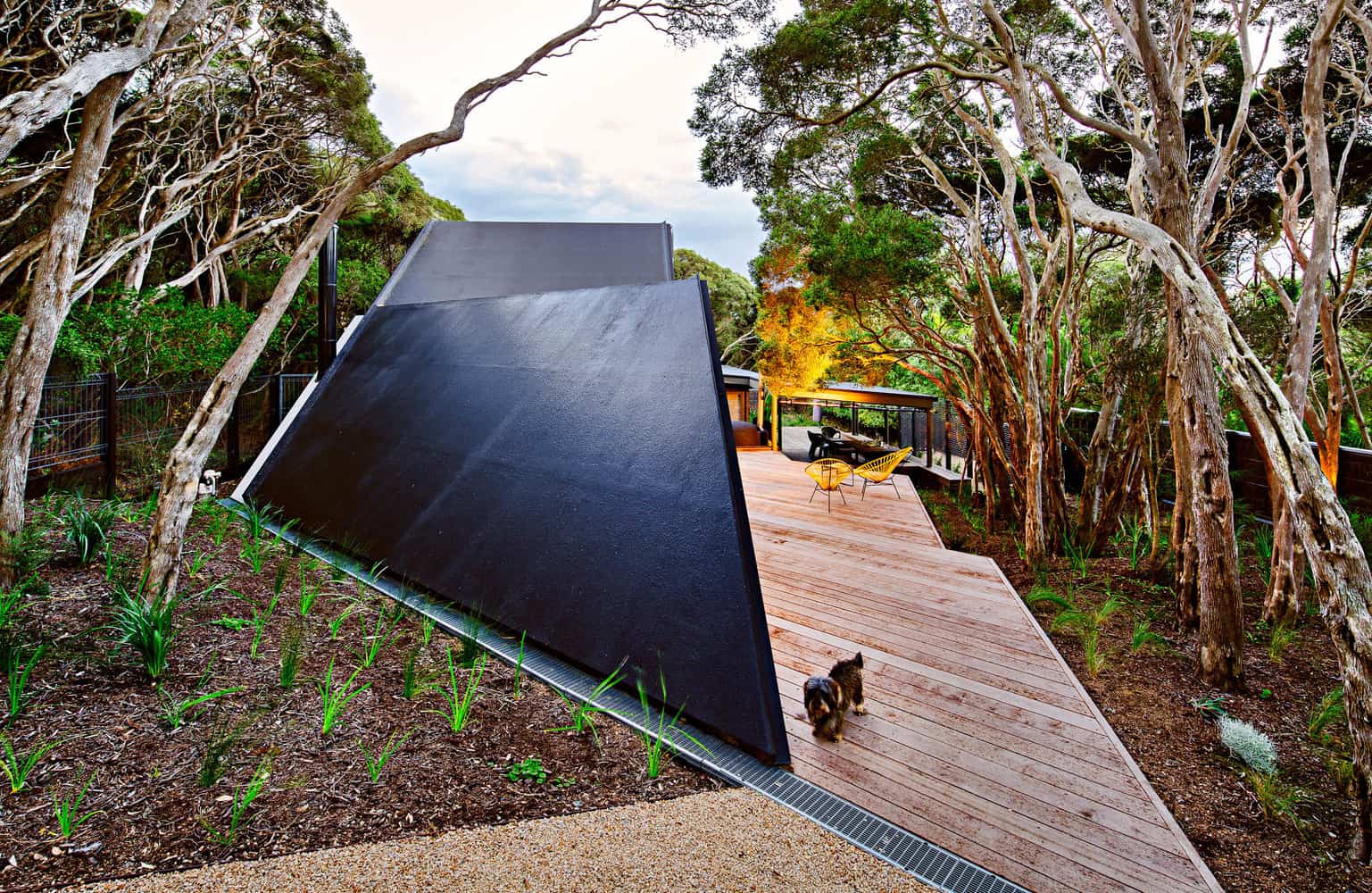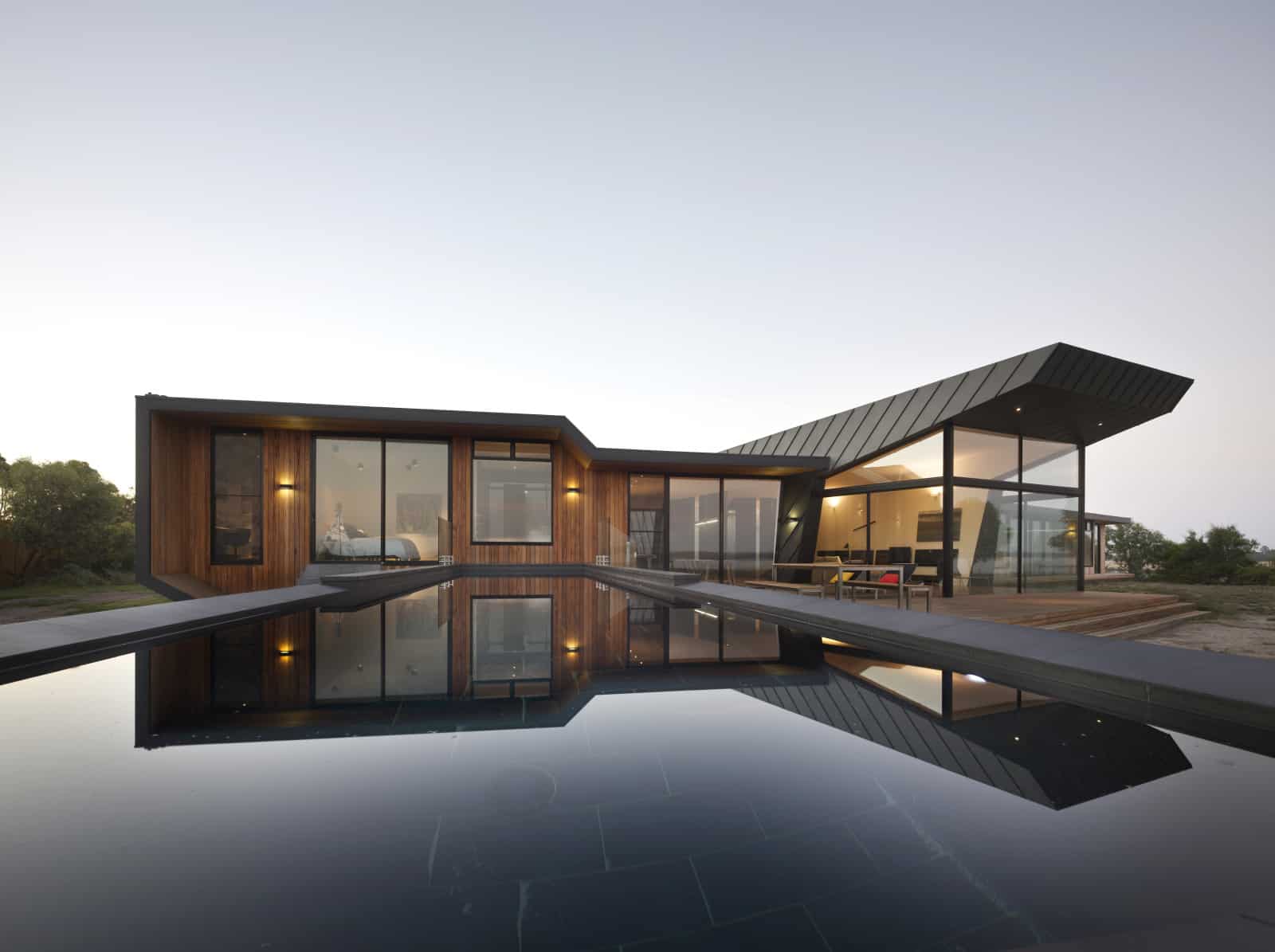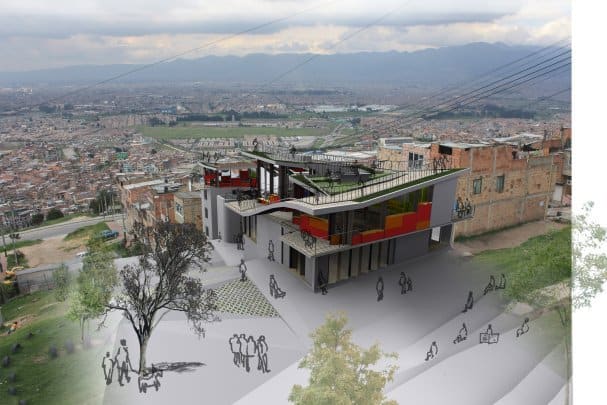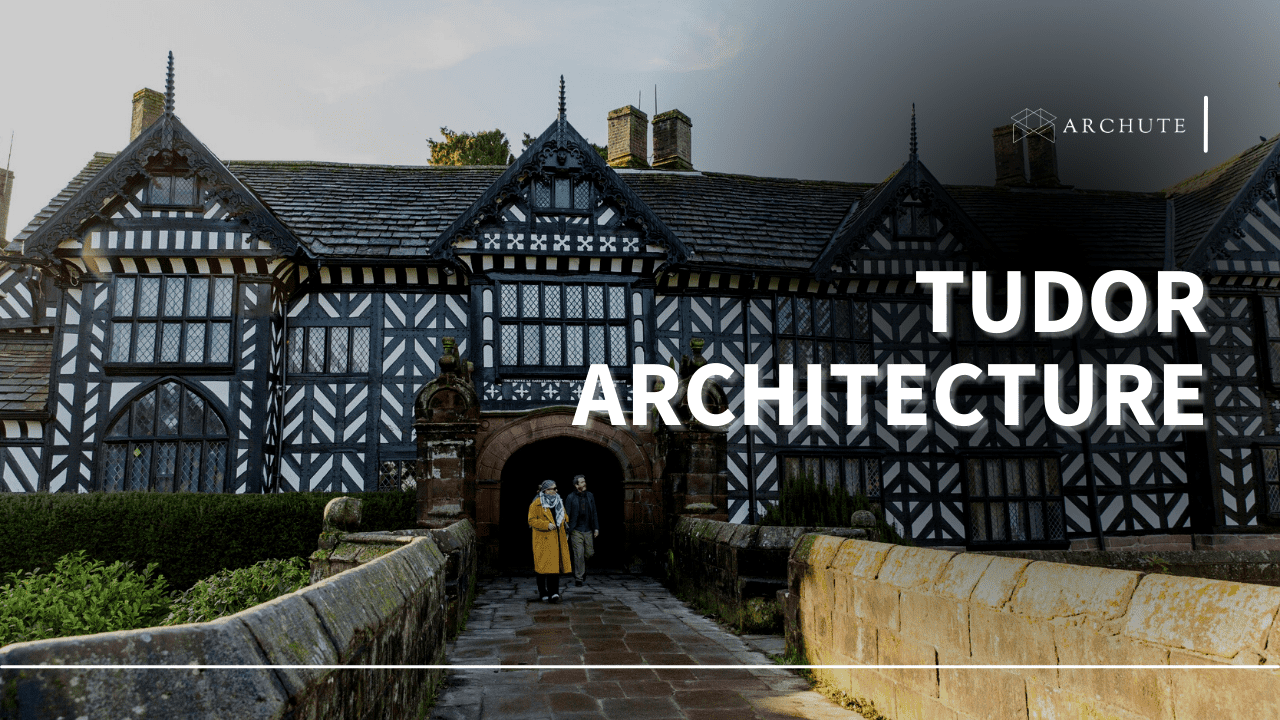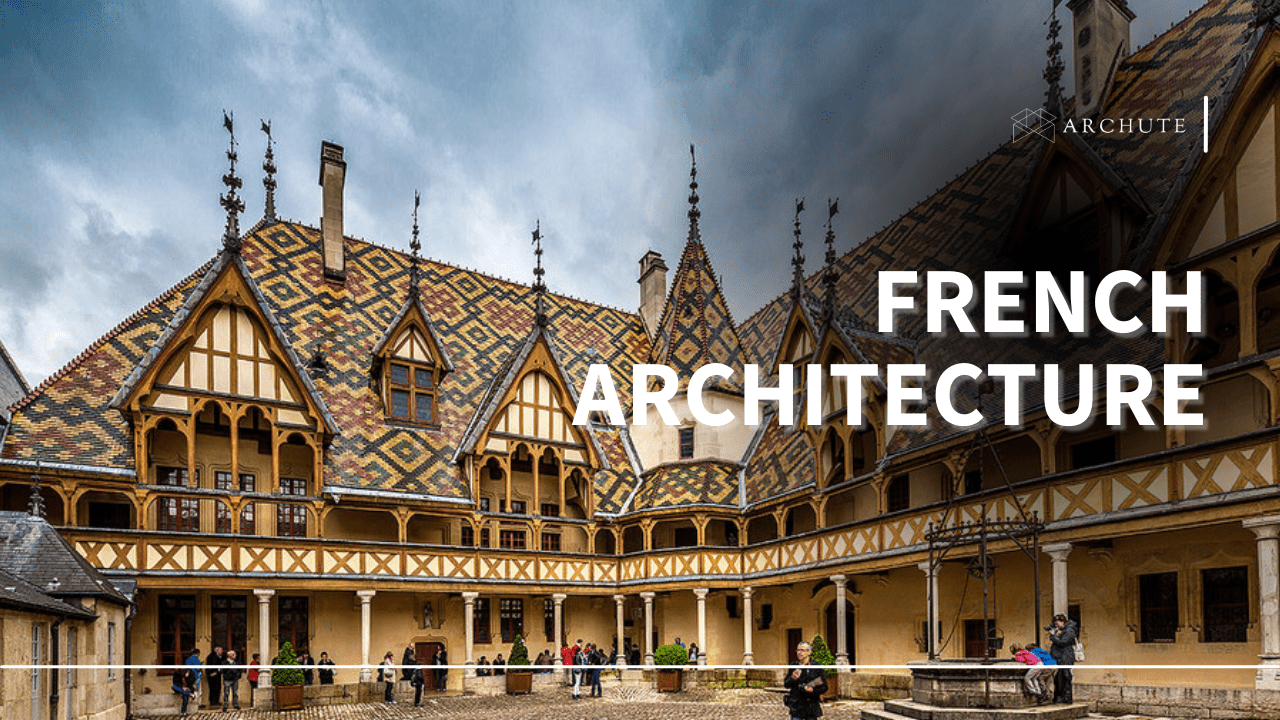Mid-century modern architecture is a 1950s and early 1960s architectural style that combines elements of other styles but puts a strong emphasis on views of nature. It has features like widespread utilization of enormous windows, Pura, absence of embellishments or battens, furniture plans with Rs openings, underplayed curves, and an inside plan that emphasizes use and need. This design was mainly implemented in the post-World War II period.
Ludwig Mies van der Rohe and Walter Gropius who moved to the United States to teach in schools such as the Illinois Institute of Technology and Harvard Graduate School of Design was the pioneers of the international modernism style. They provided a foundation to the mid-century design concept which extended from the classroom into real estate domain.
Yet, now the mid-century modern style is quite popular, at least partly because the current TV shows present that period.
Key Elements of the Mid-Century Modern Architecture

Image Credits: Architecturesstyle.com
This mid-century modern architecture style among other things was characterized by some of the following aspects; smooth lines which are in this style follow function; organic shapes such as in the egg-shaped chair; and, less embellishments. Besides that, materials such as molded plywood, vinyl, and Lucite are also employed in this style organic materials such as wood, leather, and stone are also used.
The indoor and the outdoor areas were combined conveniently by use of large glasses and open floor plans. Being focused on utility, mid-century modern architecture was characterised by simple and practical product designs. It also used such beautiful bright and vibrant colours to create that statement.
Characteristics Of the Mid-Century Modern Architecture

Image Credits: Essentialhome.eu
1. Emphasis On Simplicity and Practicality

Image Credits: Amazingarchitecture.com
One of the most well-known and recognized architectural movements of the modern era, mid-century modern architecture is a design movement that first appeared in the middle of the 20th century. This architectural design is distinguished by its clear, uncomplicated, and practical layout and the innovative use of materials and construction methods.
Mid-Century Architectural style emphasizes simplicity and practicality. The "form follows function" tenet, which states that a building's design should be based on its intended use, was held by architects of this era. Because of this, Mid-Century Modern architecture is distinguished by clear, uncluttered lines and an emphasis on functionality and efficiency.
The design is clean, uses little adornment, and takes advantage of modern materials and technologies to be both practical and effective. These guidelines produce a sense of simplicity and usefulness that is still very sought-after in contemporary architecture.
2. The Use of New Materials

Image Credits: Windermere.com
One of the main features of the Mid-Century Modern Architecture was the application of new materials. For the latter, the new materials, such as glass, steel and concrete introduced during this period allowed buildings to be constructed more quickly and cheaply. These materials allowed the architects to create vast, free-span rooms that did not need the walls for support and that would take advantage of the view and light.
By using these materials, the structures would also have a smooth, modernist look that was not limited by conforming to traditional construction methods and elements. Aside from fully embodying inventive design when these new materials were used in the Mid-Century Modern Building This also helped define the style and set it apart from traditional architecture of the time.
One main factor that makes Mid-Century Modern Architecture a highly important style in contemporary architecture today is the continued use of new materials.
3. The Focus on Technology

Image Credits: Midcenturymodernhub.com
Technology was one of the primary concerns of Mid-Century Modern architects in one way or the other. New technological advancements in the early mid-twentieth century directly interfered with this design concept. One of the modern trends in construction, which architects have embraced, is known as prefabrication.
They have also applied new materials and technology to make new, well-designed, functional items. Implementing technology could enable architects to build structures faster, more accurately, and at a cheaper cost. Technology also features prominently in Mid-Century Modern houses as a tool for creativity, innovation, and efficiency, which is famous for the style.
Today's emphasis on technology is still a defining feature of Mid-Century Modern architecture. It is one of the essential components contributing to its prominence as a modern architectural style.
4. The Integration on Nature

Image Credits: Bloomberg.com
The integration of nature distinguished mid-Century Modern architecture. During this time, architects aimed to design structures that complemented their surroundings and made the most of the views and natural light. They used big windows and glass walls to obfuscate the distinction between indoors and outdoors and bring the outdoors within the structure.
They also used materials such as wood and stone to justify establishing a connection with the physical environment. Also, this type of architecture employed large, open spaces and the transition between the interior and exterior zones in its design, ensuring the structures’ harmonious integration into the landscape. The use of nature in Mid-Century Modern architecture was far from conventional architecture and helped in framing this style as a progressive or forward-looking architecture that focused on improving the man’s association with his environment.
One of the main characteristics that still distinguishes Mid-Century Modern architecture today and contributes to its status as a highly significant architectural movement is the incorporation of nature.
Building Constructed Using Mid-Century Modern Architecture
Take a look at some of the magnificent buildings that are constructed using mid-century modern architecture.
1. Mies van der Rohe’s Farnsworth House

Year Built: 1945 -1951
Architects: Mies van der Rohe
Location: Plano, Illinois
Mies van der Rohe's Farnsworth House is one of the most famous architectural examples of the Mid-Century Modern style. Indeed, the house in Plano, Illinois, is a perfect example of a functional, simple, and technologically advanced house. Therefore, the house is a perfect example of Mid-Century Modern architecture that follows one of its main mottos, which says that less is more due to its clean lines and lack of any unnecessary frills.
They include glass and steel which are modern materials in architecture and give the construction a look of openness and lightness. The idea of the modern home that is in harmony with its environment is one of the ideas of Mies van der Rohe and is well illustrated in the Farnsworth House, which is still an impressive architectural structure up to the present time.
2. Philip Johnson’s The Glass House
Year Built: 1949 - 1995
Architects: Philip Johnson
Location: New Canaan, Connecticut
Another example of Mid-Century Modern architecture is Philip Johnson's The Glass House . The building, New Canaan, Connecticut is a classic example of a Mid-Century Modern architecture that features the minimalist glass-walled construction with creative material juxtapositions. Open floor plans, where the floor-to-ceiling windows and sliding glass doors are, make it difficult to distinguish between the interior and exterior of the home and allow for a lot of light to enter.
The Glass House has a modern look with little to no architectural ornamentation due to the incorporation of glass and steel coupled with a rectangular shape. Perhaps one of the most famous constructions of the Mid-Century Modern style, The Glass House remains a relevant architectural piece to this day.
3. The Mies van der Rohe and Philip Johnson-designed Seagram Building
Year Built: 1955 - 1958
Architects: Ludwig Mies van der Rohe and Philip Johnson
Location: Midtown Manhattan, New York City
The Seagram Building, located in New York City, is one of the most significant examples of Mid-Century Modern architecture, which was designed by Mies van der Rohe and Philip Johnson. The building is made of glass and bronze and is minimalistic, which is typical for the Mid-Century Modern style, which focuses on new technologies and materials. The structure is classical and still appreciated today due to its simplicity and clear lines of the rectilinear form.
The Seagram Building which was designed to deviate from typical architectural styles that dominated the market at the time and instead focus on simplicity, functionality and technological advancement was quite revolutionary at the time. It was the first to introduce a new concept of the commercial office buildings. Today, the Seagram Building remains one of the most iconic representations of mid-century modern architecture.
4. Eames House by Charles and Ray Eames (Pacific Palisades, California)

Image Credits: Architecture-history.org
Year Built: 1949
Architects: Charles and Ray Eames
Location: Pacific Palisades, California
The Eames House is one of the most famous pieces of Mid-Century Modern architecture designed by Charles and Ray Eames. The house is located in Pacific Palisades, California, and was designed to be a modern, minimalist home that is functional and aesthetically pleasing. The building is very simple and has the Mid-Century Modern characteristics of using new materials such as glass, scrap iron and concrete.
This house represents Eames’ vision of a home that is both inside and outside through the use of glass walls and open floor plans and its integration into its natural surroundings. The Eames House is still regarded as a classic Mid-Century Modern design and an important work of modern architecture.
5. Parker House by Richard Neutra (Los Angeles, California)

Image Credits: Thesmitsteam.com
Year Built: 1951
Architects: Richard Neutra
Location: Los Angeles, California
The Parker House is located in Los Angeles, California, and is one of the best examples of the Mid-Century Modernist architectural style; the building was designed by Richard Neutra. Designing aspects such as the flat roofs, glass walls and the minimalistic structure reflects the Mid Century Modern ideology of utilitarianism and sophistication. The lack of walls and separating spaces, and orientation to natural light defines Neutra’s concept of a house as a unity of indoors and outdoors.
The Parker House set a new standard for home architecture at the time by eschewing conventional aesthetics in favor of an ecologically friendly and technologically advanced plan. The Parker House is still recognized as an important piece of contemporary architecture and a prime example of the Mid-Century Modern style today.
6. Levine House By Paul Williams (Los Angeles, California)

Image Credits: Robbreport.com
Year Built: 1952
Architects: Paul Williams
Location: Los Angeles, California
Paul Williams created The Levine House, a prominent example of Mid-Century Modern architecture that may be found in Los Angeles, California. The building's straight lines, flat roofs, and inventive use of materials like glass, steel, and concrete represent the Mid-Century Modern style's simple aesthetic and scientific breakthroughs. Williams' idea of a contemporary home in tune with its natural surroundings is demonstrated by the open floor layout and emphasis on natural light.
The Levine House set a new standard for home design at the time by rejecting conventional aesthetics and emphasizing clarity, practicality, and modernity. The Levine House is still recognized as a highly esteemed piece of contemporary architecture and a significant illustration of the Mid-Century style today.
7. Kaufmann House by Richard Neutra (Palm Springs, California)
Year Built: 1946 - 1947
Architects: Richard Neutra
Location: Palm Springs, California
In Palm Springs, California, there is a famous example of Mid-Century Modern architecture called the Kaufmann House, which was created by Richard Neutra. The building's straightforward form, which features flat roofs, glass walls, and clean lines, embodies the utility and simplicity of Mid-Century Modern architecture. Neutra's idea of a contemporary home that effortlessly combines indoor and outdoor spaces is demonstrated by the house's inventive use of new materials and connection to its desert environment.
The Kaufmann House was forward-thinking for its time because it pioneered a new method of domestic architecture that rejected conventional designs in favor of one that was cutting-edge in terms of technology and considerate of the environment. The Kaufmann House is still considered a highly esteemed example of modern architecture.
8. Craig Ellwood House by Craig Ellwood (Los Angeles, California)
Year Built: 1965
Architects: Craig Ellwood
Location: Los Angeles, California
A famous Mid-Century Modern building, the Craig Ellwood House was designed by Craig Ellwood and is located in Los Angeles, California. The architecture of the building is as simple as can be, it has flat roofs, glass walls and clean straight lines which represent the Mid-Century Modern style. This is in line with Ellwood’s conception of contemporary homes that are at one with nature; the house’s design is free flowing and light pervades through large windows.
The Craig Ellwood House was forward-thinking for its time because it pioneered a new method of domestic architecture that rejected conventional designs in favor of one that was cutting-edge in terms of technology and considerate of the environment. The Craig Ellwood House is still recognized as a significant piece of modern architecture and an important illustration of the mid-century modern aesthetic.
9. Oscar Niemeyer’s Ministry of Education and Health (Rio de Janeiro, Brazil)

Image Credits: Guiding-architects.net
Year Built: 1936 - 1943
Architects: Oscar Niemeyer
Location: Rio de Janeiro, Brazil
An important piece of Brazilian mid-century modern architecture, the Ministry of Education and Health, was created by Oscar Niemeyer and is located in Rio de Janeiro. With its curved curves and inventive use of concrete, the building's futuristic design embodies the technical developments that defined Mid-Century Modern Architecture.
Niemeyer’s concept of a contemporary design aligned with the context of the surrounding feel is well captured within the building through aspects such as the utilization of space and large windows or glass doors. The Ministry of Education and Health was avant-garde of modern ideas of public architecture as it set a new path for construction that shunned historical notions in favor of order, functionality, and modernist science.
10. Lovell House by Richard Neutra (Los Angeles, California)

Image Credits: Architecture-history.org
Year Built: 1927 - 1929
Architects: Richard Neutra
Location: Los Angeles, California
This mid-century modern Lovell House was designed by an Austrian architect named Richard Neutra in Los Angeles, California. This famous structure was constructed in 1929 and is among the architectural designs by Neutra that features an open floor plan that is large in width, large square windows, and straight lines that create a transition between the internal and the external environment.
The steel frame and glass walls, among other cutting-edge building materials and methods, further accentuate the structure's modernist design. The Lovell House is regarded as one of Neutra's finest and a symbol of contemporary design.
11. Pearlroth House by Raphael Soriano (Los Angeles, California)

Image Credits: Realtor.com
Year Built: 1939
Architects: Raphael Soriano
Location: Los Angeles, California
A classic example of Mid-Century architecture is the Pearlroth House, which was built by Raphael Soriano and is located in Los Angeles, California. The structural style depicted in this moto is Mid-Century Modern, which is embodied by the straight lines, large windows made of glass, flat roofs, and the like.
The house is the epitome of what Soriano has in mind of a modern home where the indoors and the outdoors can blend seamlessly owing to the innovative integration of new materials and environmental context of the desert. The Pearlroth House was quite revolutionary when it was built because it utilized a whole new concept of domestic architecture that was focused on using new technology and benefiting the environment.
Conclusion
Mid-century architecture is synonymous with ubiquity, but the buildings mentioned above are signature examples of this art. The mid-century modern homes are found everywhere across the United States. They are found in homes, hotels, motels, and other structures.
Featured Image Credits: Philkeandesigns.com

